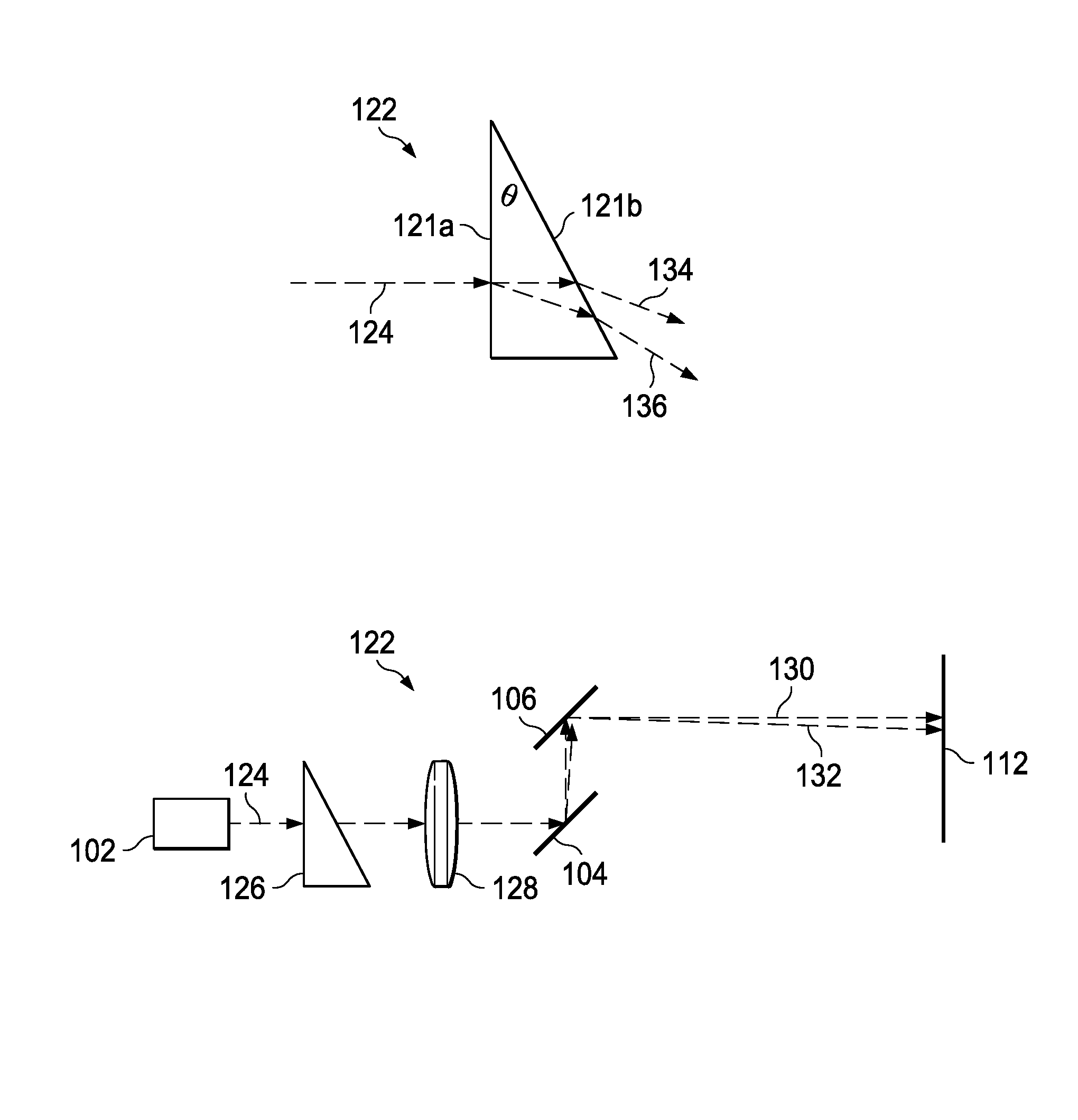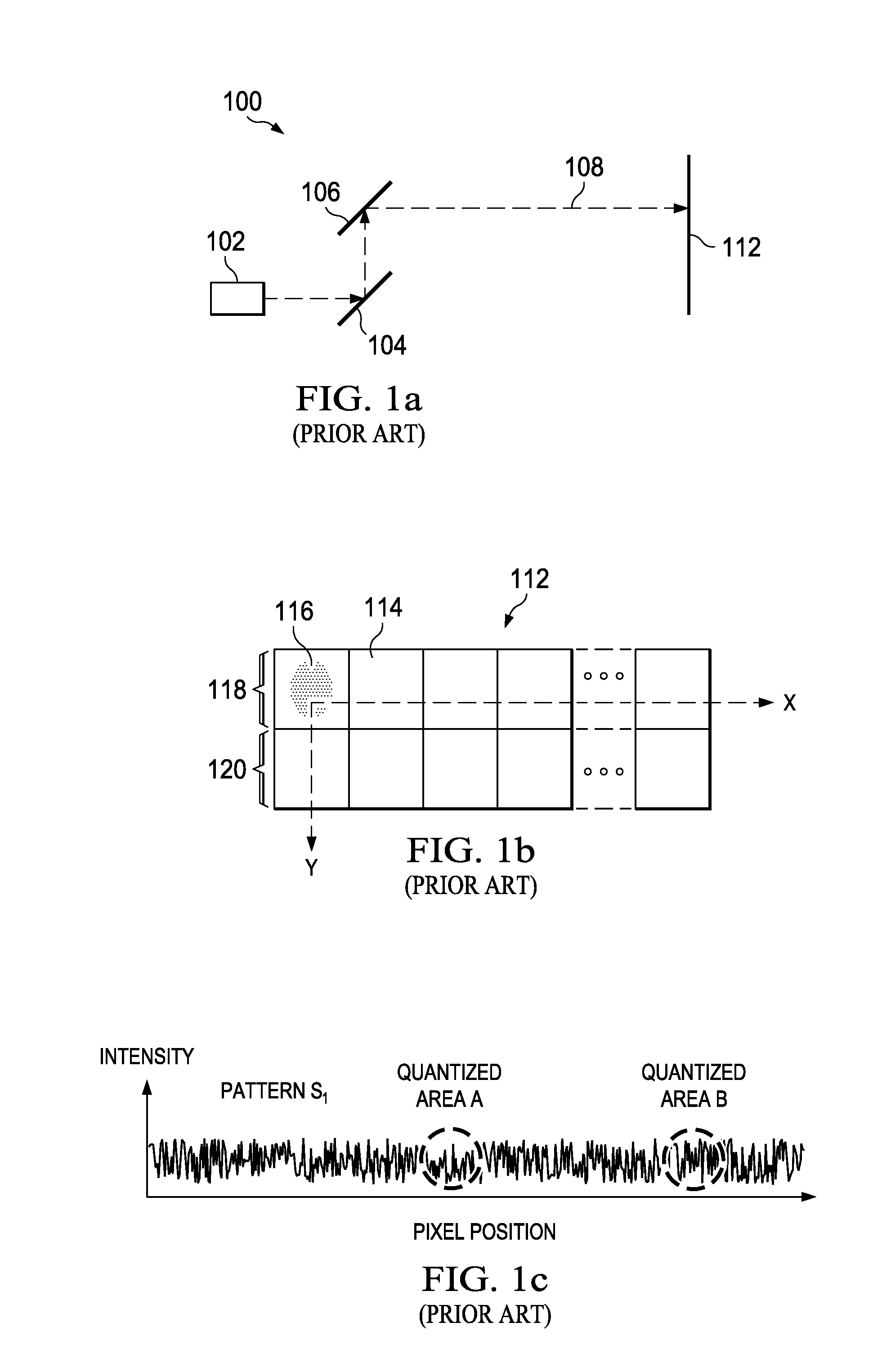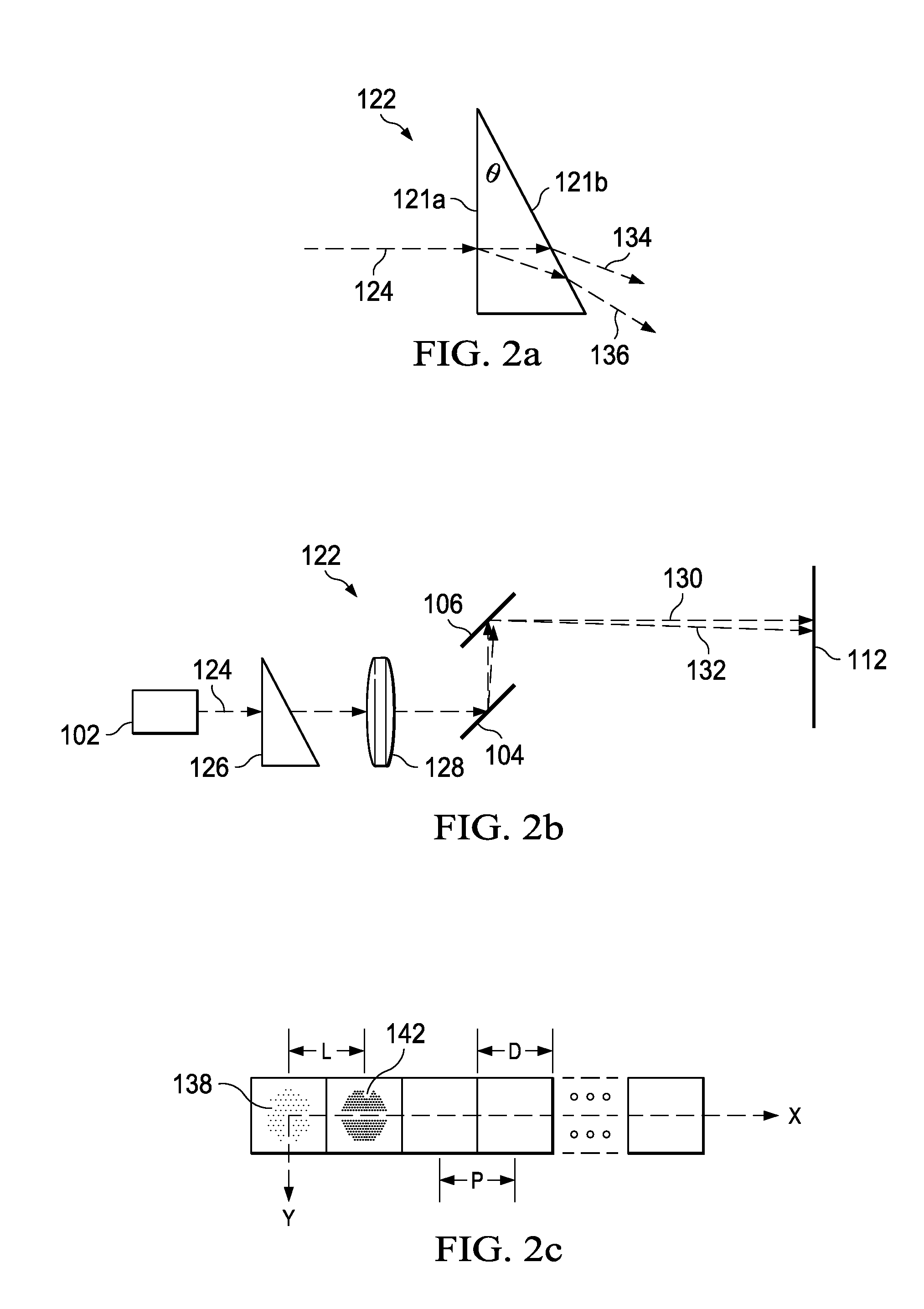Speckle reduction using beam splitting with birefringent wedge in laser scanning display systems
a laser scanning display system and beam splitting technology, applied in the field of display systems, can solve the problems of degrading the quality of the displayed image, causing the speckle effect to increase, and the solid-state light source to produce unwanted artificial effects, so as to reduce the combined speckle effect and reduce the effect of speckle
- Summary
- Abstract
- Description
- Claims
- Application Information
AI Technical Summary
Benefits of technology
Problems solved by technology
Method used
Image
Examples
Embodiment Construction
[0011]Disclosed herein is a method of reducing speckle effect in scanning display systems that employ phase-coherent light by driving light of different polarization directions from incoming polarized light; and using the derived light for producing images in the scanning display systems. The speckle reduction method for use in scanning display systems will be discussed in the following, with particular examples, wherein the laser is used as phase-coherent light in scanning display systems. However, it will be appreciated by those skilled in the art that the following discussion is for demonstration purpose, and should not be interpreted as a limitation. Other variations within the scope of this disclosure are also applicable. For example, the method is also applicable to scanning display systems that employ other types of phase-coherent light.
[0012]Referring to the drawings, FIG. 1a diagrammatically illustrates a typical laser-scanning display system 100 in the art. Laser from lase...
PUM
 Login to View More
Login to View More Abstract
Description
Claims
Application Information
 Login to View More
Login to View More - R&D
- Intellectual Property
- Life Sciences
- Materials
- Tech Scout
- Unparalleled Data Quality
- Higher Quality Content
- 60% Fewer Hallucinations
Browse by: Latest US Patents, China's latest patents, Technical Efficacy Thesaurus, Application Domain, Technology Topic, Popular Technical Reports.
© 2025 PatSnap. All rights reserved.Legal|Privacy policy|Modern Slavery Act Transparency Statement|Sitemap|About US| Contact US: help@patsnap.com



